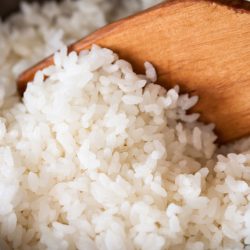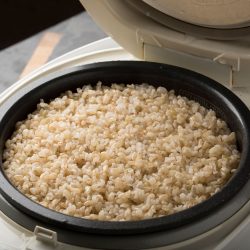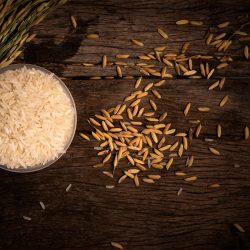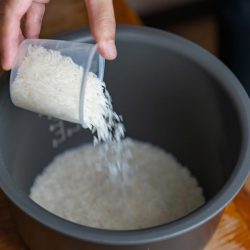If you're new to cooking in general, it can be difficult to know the best ingredients to use for recipes. And, when you need to fry a food, it becomes that much harder. What flour can we use for a fried chicken recipe? If that's what you'd like to know, we've researched the issue for you. Let's find out what makes a good flour for fried chicken!
The best flour to use for fried chicken is a matter of opinion. In general, most fried chicken recipes will recommend using all-purpose flour. If you want to experiment a little, you can use a mix of a variety of flours. Each one will have a specific purpose.
When it's your first time cooking a recipe, you'll typically want to keep it simple. But, if you have experience in the kitchen, it might pay off experimenting a little to get the perfect fried chicken! What are the different types of flours we can use for fried chicken? We cover this and more in-depth further ahead.

The Types of Flour for Fried Chicken
We'll start by comparing the most common types of flour that you'll see in fried chicken recipes.
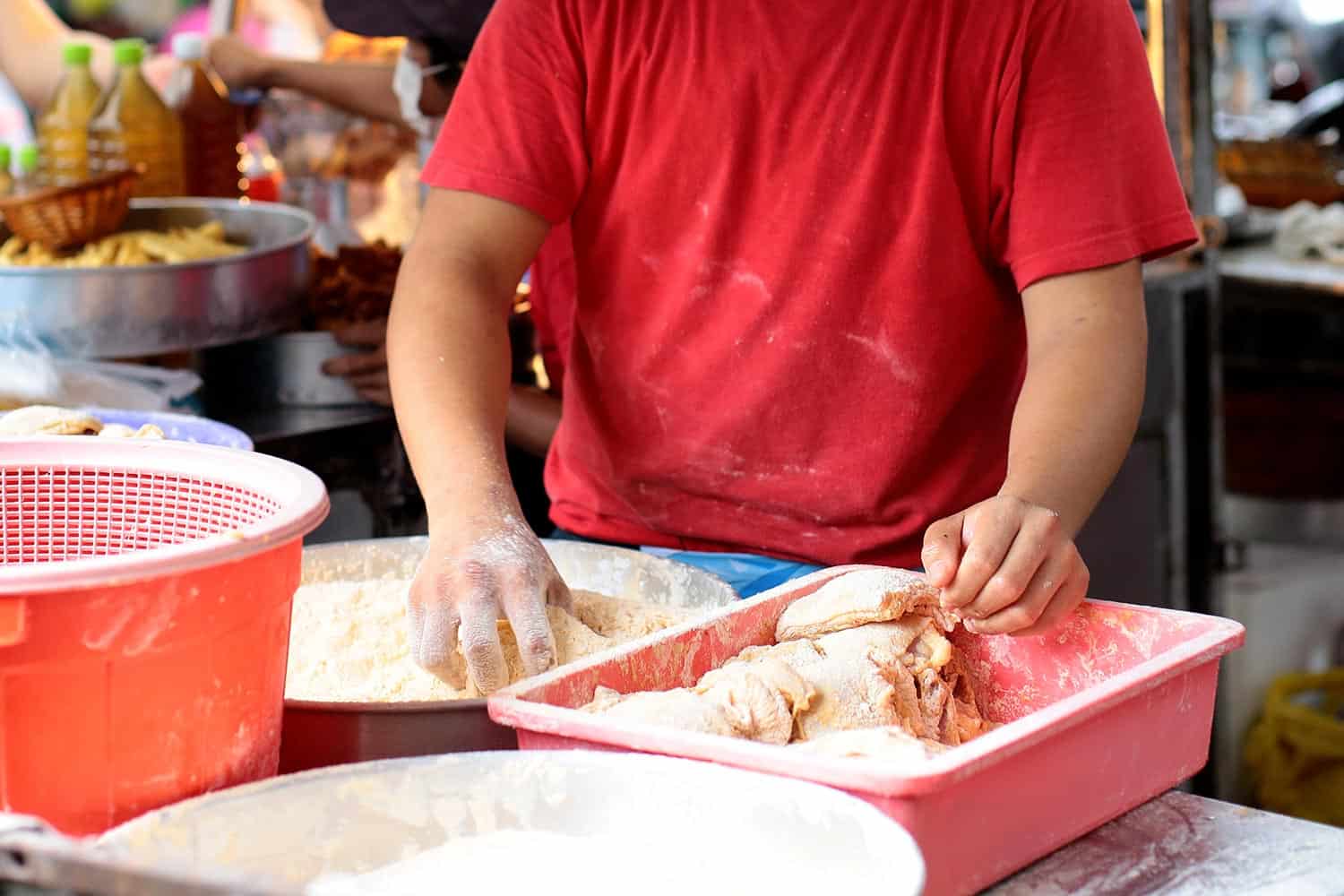
All-Purpose Flour
Click here to see this flour on Amazon.
The standard type most would use is all-purpose flour. It's the go-to option because you can't mess up a fried chicken recipe using it. As far as looks go, it gives the chicken a golden-brown coating.
For flavor, it's relatively neutral. So, if you want spices to carry the experience, you can dress it up with your favorite herbs and spices.
Semolina Flour
Click here to see this flour on Amazon.
There's nothing better than the first bite that produces a crunch you won't forget. If you want to enhance the texture of the chicken, some use semolina flour to provide the extra crispiness that a lot of people love.
If you search around, you might get the idea of substituting semolina flour with standard wheat flour. However, you'd be wrong to do so because it doesn't produce the same results.
Semolina flour comes from ground-up durum wheat. Durum wheat is a hard type of wheat. And, when it's ground up, you get a coarse flour. When you deep fry it, it tends to produce a crisp and crunchy finish.
But, what about spices and herbs? Does it add anything to the flavor? It'll depend on the variety that you purchase. But, it will give the chicken an extra golden-brown coating. In addition, you can add spices if you'd like to the mix. According to some, it has an earthy aroma that you can notice.
If you're planning on having dippings, a semolina flour coating seems to hold up well under sauces. It's a bonus if you don't like a soggy crust.
Chickpea Flour
Click here to see this flour on Amazon.
Chickpea flour is an option for those that want little-to-no gluten in their diets. As the name implies, it's a type of flour that comes from grinding chickpeas. So, if you don't have the flour at home, you can make your own if you have chickpeas lying around.
As far as nutritional value goes, it's gluten-free. It also contains fewer calories and carbohydrates than other options out there. Lastly, if you're looking to include more protein in your diet, chickpea flour does tend to have higher protein content than whole wheat flour.
When you opt to go with chickpea flour in a fried chicken recipe, it adds an earthy and deep flavor. Texture-wise, it does lean on the dense side.
Rye or Barley Flour
Click here to see this flour on Amazon.
If you want to make everything count, rye and barley flour are two options that can add flavor to the recipe. However, it works the best with darker cuts of meat. So, if you're planning to fry thighs or drumsticks exclusively, these types of flours are some to consider.
They are both mostly known for their subtly sweet and nutty flavor. As far as color goes, barley and rye flour produce a golden-brown coat if fried for the right amount of time.
Rice Flour
Click here to see this flour on Amazon.
Last but not least, rice flour is another alternative you can consider trying. As the name implies, this type of flour comes from finely milled brown or white rice. Like chickpea flour, it's gluten-free! If you've ever tried tempura, rice flour is commonly used to give it a golden-brown color.
So, this can give you a slight idea of how your chicken will come out. Rice flour is also a healthy alternative if you're trying to reduce calories! As some professionals suggest, it absorbs less oil than other flours while frying.
If you use rice flour, you will most likely get fried chicken that is less greasy with a thin, crispy, and dry crust.
What Is the Secret to Good Fried Chicken?
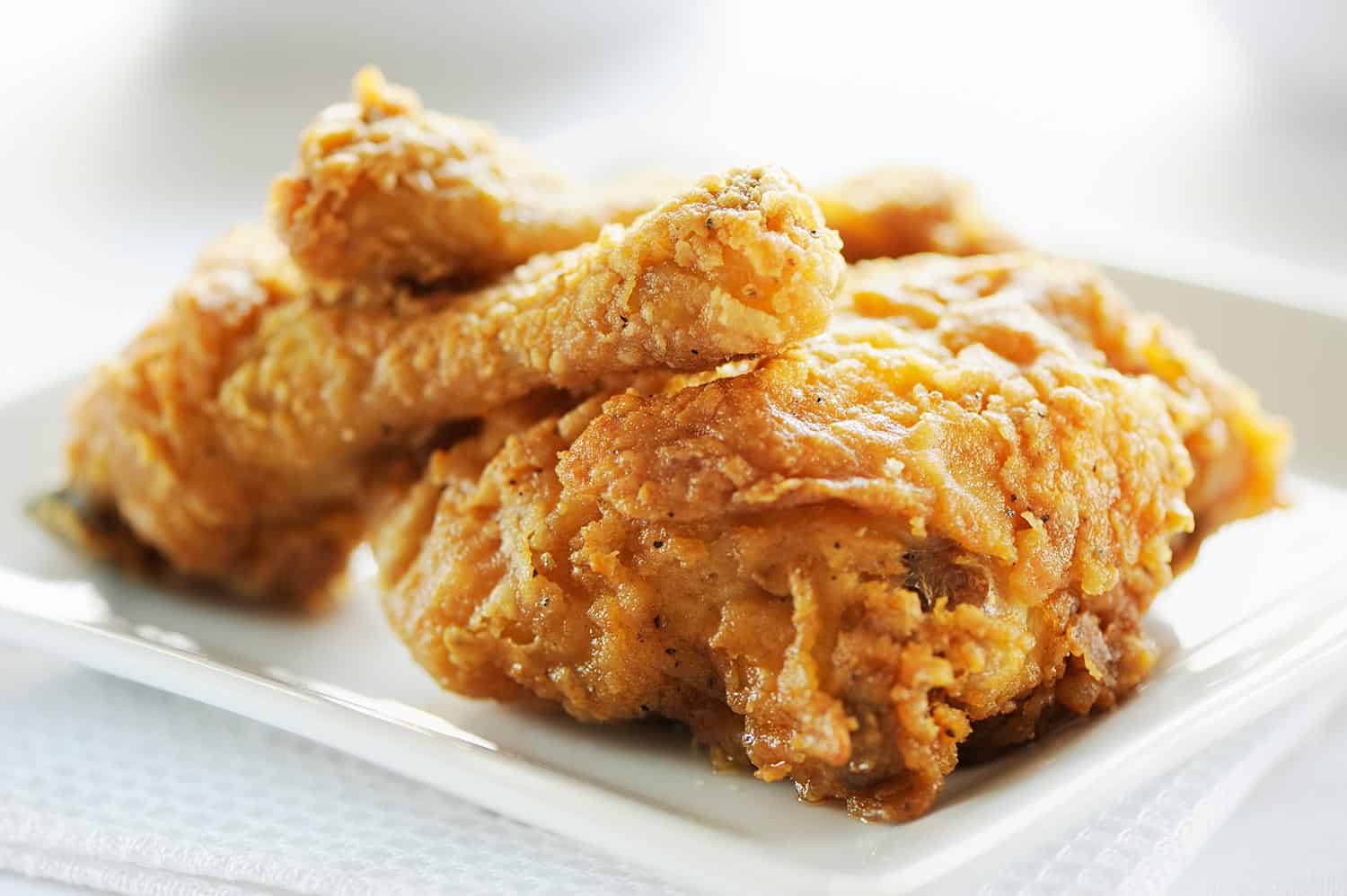
Cooking good fried chicken in your first few tries is no easy feat. In most cases, the crust won't come out crunchy. Regarding the chicken meat, it might even come out undercooked! So, to improve from our mistakes, we'll need to go over some tips that can step up our game.
The first aspect we'll have to consider is retaining flavor in our chicken pieces. If you want the chicken to come out rich and flavorful, some suggest using a saltier marinade. To accomplish this, you'll need to add half an ounce of salt per cup of marinade.
If you want to add more crunch, you can drizzle two tablespoons of marinade into your dredging flour. Whisk the marinade with your flour and then coat the chicken with it.
This method allows for the formation of clumps that will later dry and add that extra crunch that your chicken might have lacked!
Double Frying
This tip will relate to frying. Meaning, you should only use this method if you're still having trouble giving the chicken a crisp coating. Usually, if you want a crispy coat, you'll have to let the chicken fry longer. But, that usually comes at the cost of making the chicken meat dry.
To work around this problem, you can fry the chicken for as long as the recipe suggests. Then, instead of letting it dry and eating it right away, you can fry it again. So, you'll have to let it dry for 30 minutes before frying it a second time.
With this method, you'll end up with a crispier crust without having to dry out the meat.
Use An Appropriate Oil For Frying
The last tip for cooking good fried chicken is to use oil with a high smoke point. Most would typically reach for something like extra virgin olive oil. And, this would be a bad idea because - once it starts smoking - you're producing chicken that's similar in flavor to burnt food.
For this reason, you should go with options like canola, peanut, or vegetable oil.
Why Is My Fried Chicken Not Crispy?
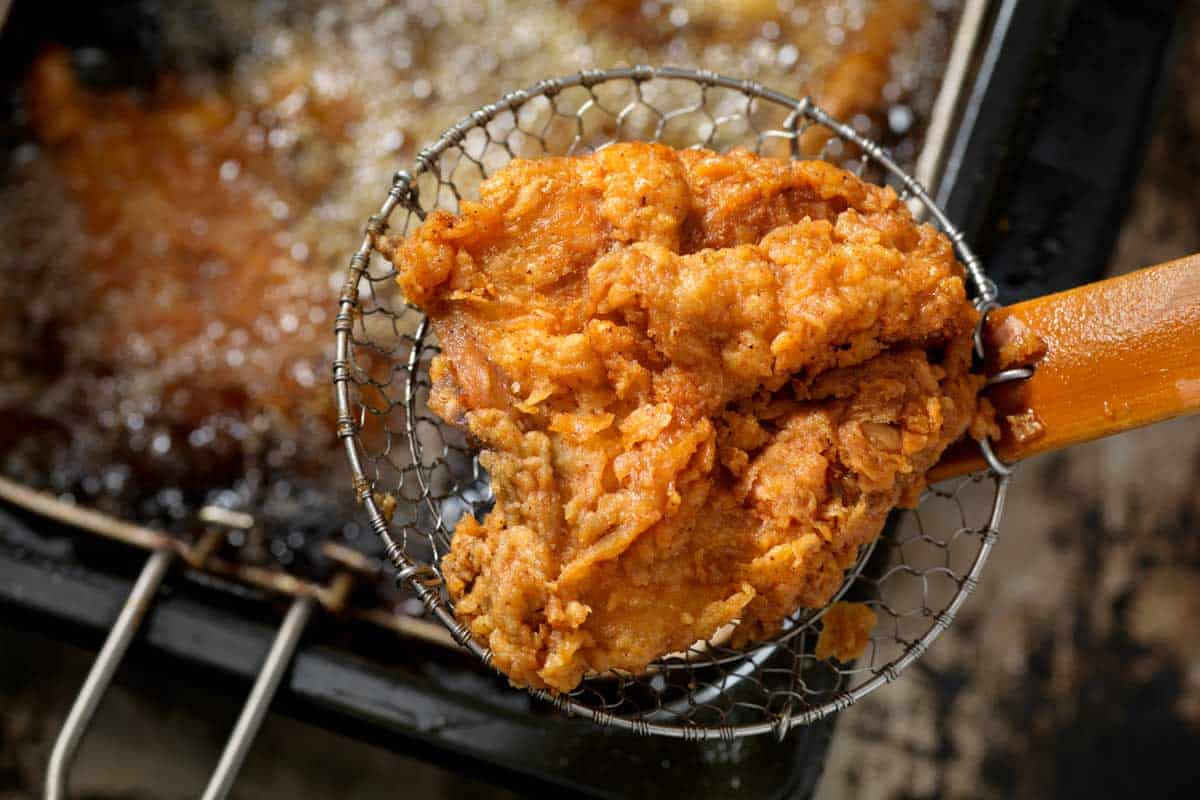
No matter how much you try, you most likely won't escape soggy fried chicken in your first attempts to cook the dish. What exactly is causing this problem? That'll depend on what you're doing to prepare the dish.
Since we're not all following the same recipe, we'll have to look over the process and narrow down where it goes wrong. The first mistake will relate to the temperature of the chicken. Meaning, did you allow it to settle at room temperature before frying?
If you didn't, the cold temperature from the chicken drops the temperature of the oil. This situation leads to an unevenly cooked chicken and a watered-down crust. You need to keep a consistent temperature of 350 degrees Fahrenheit.
So, if you want to avoid the oil dropping below this threshold, some suggest keeping the oil over 350 degrees. If you're frying multiple pieces, keep a thermometer handy to track how each piece influences the cooking temperature.
How Do You Get Flour To Stick to Chicken?
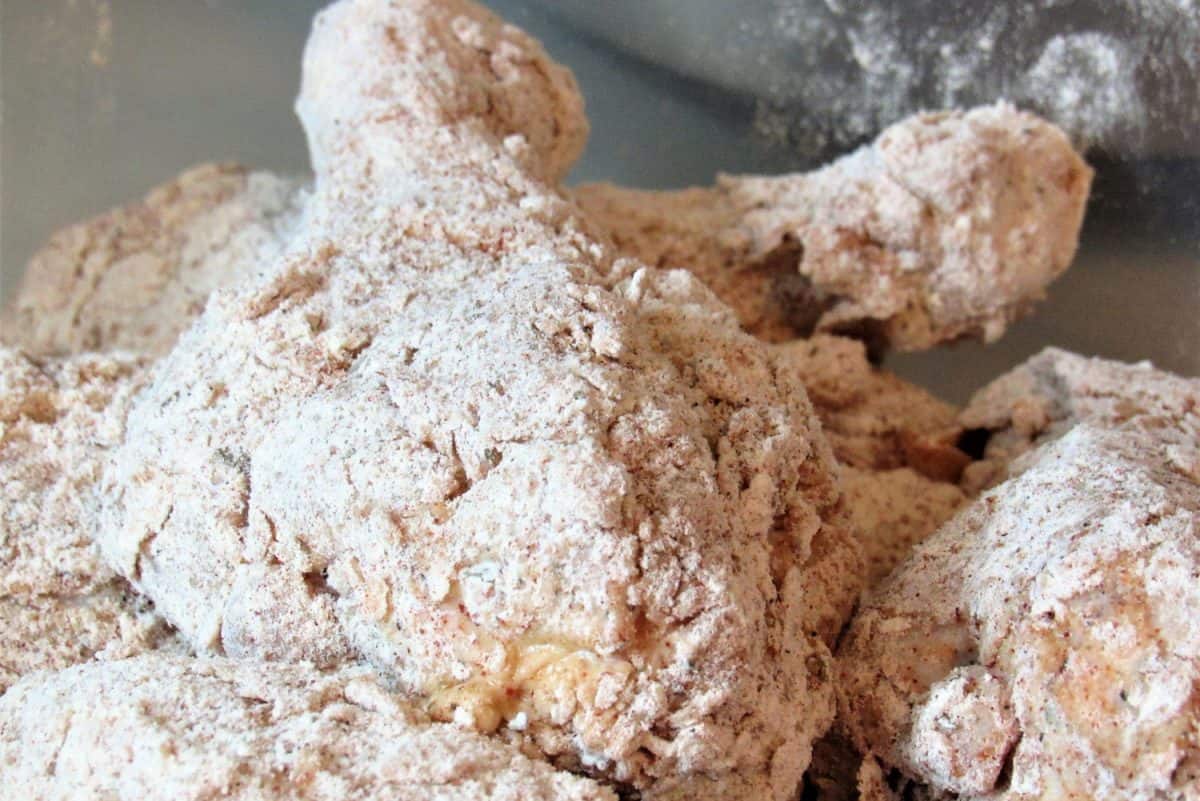
The common problem most seem to run into is the flour not sticking to the chicken. If you want to fix this issue, you'll have to adjust your breading technique. Let's go over how to bread the chicken.
- You start by patting the chicken dry. Use a paper towel to remove excess moisture from every side.
- Once it's ready, you can move on to seasoning the chicken and dredging it with a flour of your choice.
- Dip the coated chicken into a bowl of beaten eggs or buttermilk. Make sure it completely covers the flour.
- Apply breadcrumbs. Don't be too conservative with this step. You'll want a thick coating.
- Most importantly, let the chicken chill in the refrigerator on a cooling rack. This step ensures the ingredients solidify - which helps the flour adhere to the chicken.
How Many Minutes Do You Fry Chicken?
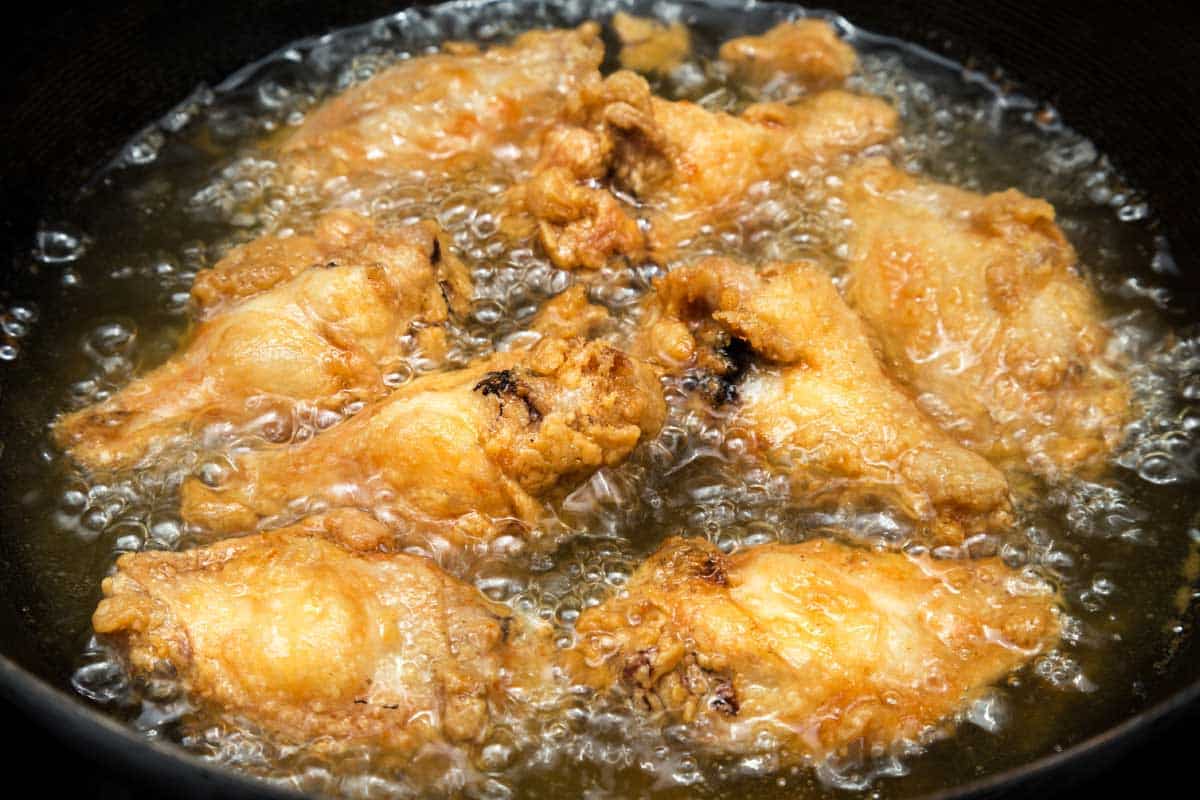
The amount of time chicken will need to fry will depend on the piece you're cooking. Chicken wings will take around six to ten minutes to fry. Thighs, legs, and breasts will take about 10-14 minutes to fry. Adjust your frying time by the temperature you're frying the chicken at.
The higher the temperature, the lower time it needs to be on the skillet. Lower temperatures will require more time.
Final Takeaway
Frying chicken is a slow but worthwhile process. Once you get the hang of it, it'll be hard to return to fast food variations! Hopefully, you can use the information above to help you achieve the perfect fried chicken!
Before you go, do you have other questions regarding this dish? Should you prepare the chicken before frying? If you'd like to find out, check out our post - Should You Boil Chicken Before Frying?
Need help with flouring? Check out this post for more guidance:
How To Flour Chicken [5 Easy Steps To Follow]






![Pour water into rice - How Much Water To Rice In Rice Cooker [Ratio By Type Of Rice]](https://kitchenseer.com/wp-content/uploads/2022/03/Pour-water-into-rice-250x250.jpg)
![A rice cooker filled with freshly cooked rice, Can Rice Cookers Cook Brown Rice? [And How to]](https://kitchenseer.com/wp-content/uploads/2022/02/A-rice-cooker-filled-with-freshly-cooked-rice-250x250.jpg)
